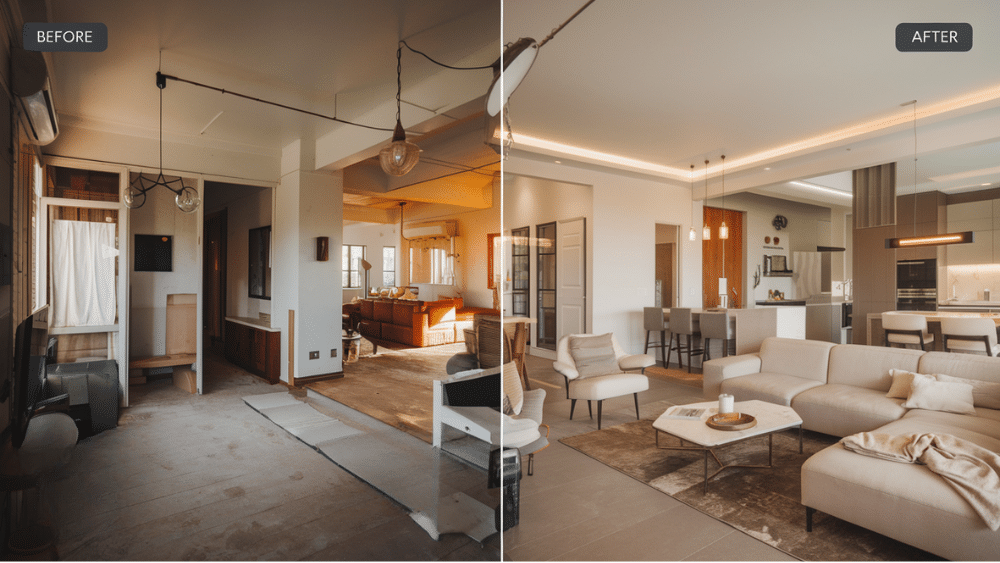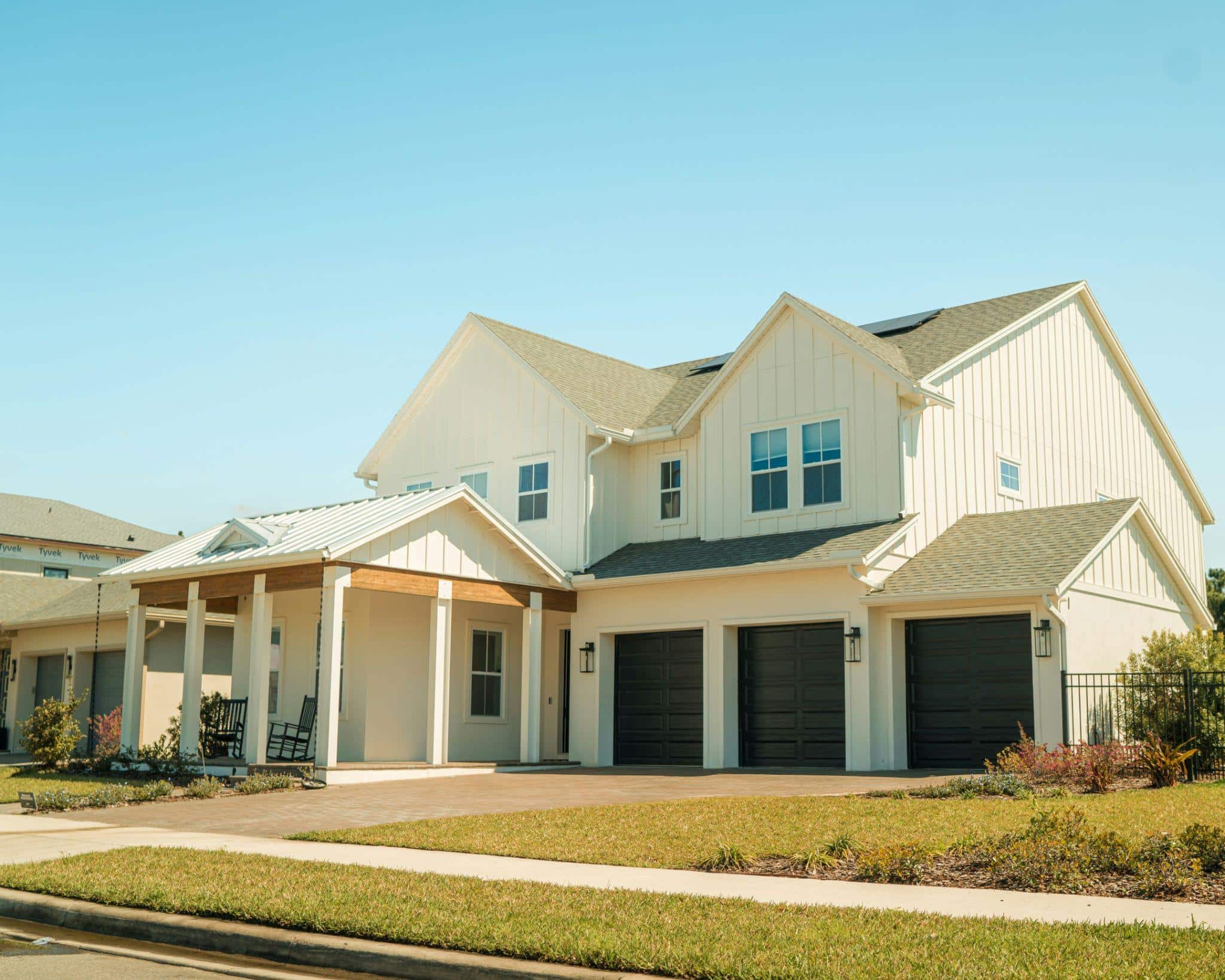Does your home feel outdated and cramped? You walk through rooms that no longer match your lifestyle. Old fixtures, worn-out floors, and poor layouts make daily life harder than it should be.
You’re not alone. Millions of homeowners face the same frustration. They want a beautiful, functional space but don’t know where to start. The renovation process seems overwhelming and expensive.
But what if you could transform your entire home systematically? What if you had a clear roadmap that covers every step from planning to completion? A guide that helps you avoid costly mistakes and manage your budget effectively?
This complete renovation guide shows you exactly how to do it. You’ll learn proven strategies for planning, budgeting, and executing your home transformation. From permits to final touches, we’ll walk you through each phase.
Ready to turn your house into your dream home?
What Does a Full Renovation Entail?
A full renovation means updating your entire home from top to bottom. This goes beyond simple cosmetic changes like new paint or furniture.
- Structural Changes: You might remove walls to create open floor plans. Kitchen and bathroom layouts get completely redesigned. Electrical and plumbing systems need updates.
- Major Systems: HVAC systems require replacement or repairs. Old wiring gets updated for modern needs. Plumbing lines may need rerouting for new fixtures.
- Surface Work: All flooring gets replaced throughout the home. Walls receive new drywall and fresh paint. Kitchens and bathrooms get new cabinets and fixtures.
- Timeline and Budget: Most full renovations take 3-6 months to complete. Costs typically range from $100-200 per square foot. A 2,000 square foot home renovation costs $200,000-400,000.
The scope depends on your home’s condition and your renovation goals.
Dreaming Big: Defining Your Vision

Start by thinking about how you want to live in your renovated space. Consider what bothers you most about your current home.
Do you need more storage, better lighting, or improved traffic flow? Your vision should reflect your lifestyle and daily routines.
- Clarify your goals: List specific problems like dark rooms, cramped spaces, or poor storage that need fixing
- Create visual tools: Use Pinterest boards, sketches, or magazine clippings to gather images that inspire your ideal look
- Balance dreams with reality: Research actual costs and structural limits before committing to expensive or complex changes
Remember that your vision serves as your roadmap throughout the renovation process. Keep it realistic but don’t be afraid to think creatively about solutions.
A clear vision helps you make consistent decisions and stay on track when challenges arise.
Note: Save all your inspiration images and notes in one place. You’ll reference them often during planning and when making design decisions with contractors.
Budgeting Without Breaking Down

Creating a realistic renovation budget prevents financial stress and project delays. Start by researching actual costs for materials and labor in your area. Add 20-30% extra for unexpected issues that always come up during renovations.
- Build a smart budget: Get quotes from multiple contractors and price out materials yourself to understand true costs.
- Know where to save vs. splurge: Save on paint and hardware, but invest in quality plumbing, electrical, and structural work.
- Plan for contingencies: Set aside 25-30% of your total budget for surprise repairs, permit fees, and change orders
Track every expense throughout your renovation to stay on target. Break down costs by room or project phase to see where money goes. This helps you make informed decisions when unexpected choices arise.
Note: Always get written estimates and contracts. Verbal agreements often lead to disputes and budget overruns later in the project.
The Power Team: Who You Need and Why

Building the right team makes or breaks your renovation project. Each professional brings specific skills and expertise to different parts of the process. Understanding their roles helps you hire the right people and avoid costly mistakes.
- Know the key players: Contractors handle construction work, designers focus on aesthetics and functionality, and architects create structural plans and handle permits
- Understand their responsibilities: Contractors manage labor and materials, designers select finishes and layouts, and architects ensure structural safety and code compliance
- Choose trustworthy professionals: Check licenses, read reviews, ask for references, and get detailed written contracts before starting any work.
Interview at least three professionals for each role before making decisions. Ask to see recent projects and speak with past clients about their experience. Clear communication and shared vision matter more than the lowest price.
Note: Start building your team early in the planning process. The best professionals book months in advance, especially during busy renovation seasons.
Common Challenges and How to Overcome Them
- Budget for the unexpected: Set aside 25-30% extra money for surprise repairs, code updates, or hidden structural issues
- Plan for delays: Add 2-4 weeks to your timeline for permit approvals, material backorders, and weather-related setbacks
- Create clear contracts: Get everything in writing including timelines, materials, costs, and change order procedures
- Schedule regular check-ins: Meet with contractors weekly to discuss progress, address concerns, and prevent small issues from becoming big problems
- Prepare a temporary living space: Set up one room as a clean zone with essential items if you’re staying in the home during work
- Keep detailed records: Document all conversations, changes, and expenses to avoid disputes and stay organized
- Have backup plans: Research alternative contractors, suppliers, and materials in case your first choices fall through
Full Renovation vs. Partial Renovation
Choosing between a full or partial renovation depends on your budget, timeline, and home’s condition. Each approach has distinct advantages and drawbacks that affect your experience and results.
| Aspect | Full Renovation | Partial Renovation |
|---|---|---|
| Cost | $100-200+ per sq ft | $20-80 per sq ft |
| Timeline | 3-12 months | 2-8 weeks |
| Disruption | High – may need temporary housing | Low – can live in most areas |
| Planning Required | Extensive permits and design work | Minimal permits needed |
| Value Added | 60-80% return on investment | 40-70% return on investment |
| Best For | Outdated homes, major layout changes | Updating specific rooms or features |
How to Decide Which is Right for You:
Consider a full renovation if your home has multiple outdated systems, poor layout, or structural issues. Choose partial renovation when only certain rooms need updates or your budget is limited.
Evaluate your current home’s condition, your family’s needs, and how long you plan to stay. Full renovations work best for long-term homes, while partial updates suit shorter timelines.
Return on Investment (ROI)
Most full renovations return 60-80% of their cost when you sell your home. Kitchen and bathroom updates typically offer the highest returns, recovering 70-85% of investment.
High-ROI Areas: Kitchen remodels, bathroom upgrades, and fresh paint provide the best financial returns. HVAC updates and new flooring also add substantial value.
When Full Renovation Makes Sense: Consider full renovation when your home’s value is significantly below neighborhood averages. If comparable homes sell for much more than yours, renovation can close that gap.
Financial Timing: Full renovations make most sense if you plan to stay 5+ years. Short-term ownership rarely recovers renovation costs through increased value.
Conclusion
A full home renovation requires careful planning, realistic budgeting, and the right team of professionals. Start with a clear vision of what you want to achieve. Create a detailed budget that includes extra money for unexpected issues.
Choose contractors, designers, and other professionals based on their experience and references. Good communication prevents most renovation problems before they start.
Remember that renovations take time and patience. Expect delays and budget overruns as normal parts of the process. Focus on the end result – a home that fits your lifestyle and needs perfectly.
Your renovation project will test your patience, but the results make it worthwhile. Take time to plan properly, hire good people, and stay flexible when challenges arise.
Ready to start your home transformation? Begin with your vision and budget, then build your team of trusted professionals.
What’s your biggest renovation concern? Share your thoughts in the comments below.








